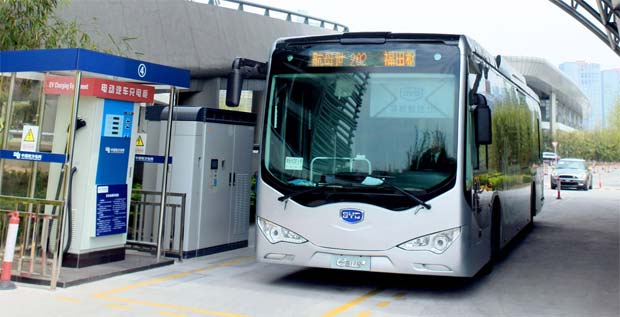
Nepal’s Untapped Potential: Pork Meat Industry
January 21, 2018
Tax Registration System in Nepal: Questions regarding PAN and VAT
February 23, 2018Electric Vehicles: Is there a future in Nepal?
With the increasing rate of pollution in Kathmandu, there may come a time when one has to mandatorily put protective glasses and layered masks before leaving the house to shield themselves from lethal gases and dust in the air. To avoid such a situation, it is crucial to start taking preventive steps now and one possible choice can be electrification of transport vehicles. All forms of transportation including two-wheeler and four-wheeler private vehicles as well as public buses can be replaced with renewable energy-run electric vehicles. Moreover, since Nepal has a comparative advantage in terms of production of hydroelectricity, it has a huge potential to replace fossil fuel in upcoming days.
Why Electric Vehicles (EVs)?
● A Cleaner, greener, and quieter alternative
● Money saving and cheaper in the long run
● Dependent on domestic energy sources
Electrification of vehicles is the future. Globally, business organizations, non-profit organizations as well as economies are gradually pushing for this notion. Many established automobile companies as well as startups are spending millions of dollars in their Research and Development (R&D) department to develop this technology. Volvo, a well-known Swedish car manufacturer, has even announced that all the vehicles in production from 2019 will have an electric motor powering it. Tesla Motors revolutionized the automobile industry by introducing electric luxury cars. Tesla proved that the automotive future doesn’t need to depend on gasoline
Therefore, it is high time that Nepal also realizes the importance of this technology and joins the bandwagon immediately to keep up with the rest of the world.
Why isn’t it working in Nepal?
● The initial cost of purchasing an EV is more expensive than a conventional Internal Combustion Engine (ICE)
● Infrastructure needed for the smooth operation of the EV ecosystem is limited in Nepal
● People are still skeptical that the load-shedding days will return and the money invested in the vehicle will go down the drain
● Filling up tanks for ICE-run vehicles are more convenient than charging EVs
Opportunities nonetheless
According to a research conducted by Kathmandu Electric Vehicle Alliance (KEVA) during March 2006, operation of electric public vehicles including trolleybuses is completely feasible in Kathmandu. Furthermore, the research has also found that the financial returns of EVs are higher than diesel-run microbuses. So, it is not only better for the environment, but also for the profit of public transportation. Furthermore, Nepal is capable of developing an infrastructure on its own so that the ecosystem of private two wheeler EVs, private four wheeler EVs as well as large and small public EVs operate in harmony.
In 1996, 600 electric Safa Tempos were introduced to displace the then diesel-run three-wheelers in Kathmandu valley.  Currently there are around 700 safa tempos plying the roads of the valley. To remove polluting vehicles off the road, the government has brought in a rule to remove vehicles which are more than 20 years old. As a result of this, even electric Safa Tempos are being removed because they are not mechanically sound. Instead of completely banning these electric three-wheelers, repairing these vehicles and maintaining strict standards of mechanical soundness can be enforced.
Currently there are around 700 safa tempos plying the roads of the valley. To remove polluting vehicles off the road, the government has brought in a rule to remove vehicles which are more than 20 years old. As a result of this, even electric Safa Tempos are being removed because they are not mechanically sound. Instead of completely banning these electric three-wheelers, repairing these vehicles and maintaining strict standards of mechanical soundness can be enforced.
The introduction of the Safa Tempos has not only benefited us environmentally but socially too. We can see a significant hike in the number of female drivers who drive the Safa Tempo and earn their living from it. For instance, currently in the Ratnapark-Teku-Chhauni-Sitapaila route, a total of 57 tempos operate out of which 36 are driven by females. This has not only given them additional income but also boosted their self confidence and opened them to a new social circle of women drivers. Therefore, it is important that operation of these EVs remain intact in a sustainable manner.
There are a few towns in the Terai region of Nepal in which e-rickshaws are actually replacing pedal-run and ICE vehicles. They require less effort to run than pedal-run rickshaws, it can accommodate more people and it is more affordable for the passengers. Furthermore, these rickshaws have become an alternative means of livelihood for the locals. E-rickshaws, therefore have a great potential to replace vehicles used for short-distance commutes in plain areas which do not have a lot of geographical variations.
Similarly, an electrically assisted rickshaw has been developed in Nepal from scratch by Robotics Association of Nepal in collaboration with Karma Coffee and Nepal Communitere. Kinetic energy is produced while pedalling the rickshaw which then assists the movement of the rickshaw. Though the parts required for the rickshaw has been imported from China, it has been developed from ground up by Nepali engineers.
Inputs from the government
 Nepal Electricity Authority (NEA), in collaboration with a car company named “Build Your Dreams (BYD)”, installed charging stations in five locations inside Kathmandu Valley which is a positive step towards promoting use of EVs in Nepal. In addition to this, the government can take decisions on a broader level so that there is a bigger impact in a short time. One such step could be lowering of customs duty on electric vehicles; similarly, the cost of ownership of electric vehicles can also be lowered. Another important step that the government can take to promote electric vehicles is by using electric vehicles as public transportation. Sajha Yatayat can be a great platform for the government to encourage the use of EVs. Addition of electric buses to their fleet and eventually replacing the ICE buses can be a good move. Furthermore, the government can also provide incentives to public transportation companies by exempting certain taxes. Development of a fully functional EV infrastructure, initially inside the valley, should be taken as a top priority by the concerned authorities.
Nepal Electricity Authority (NEA), in collaboration with a car company named “Build Your Dreams (BYD)”, installed charging stations in five locations inside Kathmandu Valley which is a positive step towards promoting use of EVs in Nepal. In addition to this, the government can take decisions on a broader level so that there is a bigger impact in a short time. One such step could be lowering of customs duty on electric vehicles; similarly, the cost of ownership of electric vehicles can also be lowered. Another important step that the government can take to promote electric vehicles is by using electric vehicles as public transportation. Sajha Yatayat can be a great platform for the government to encourage the use of EVs. Addition of electric buses to their fleet and eventually replacing the ICE buses can be a good move. Furthermore, the government can also provide incentives to public transportation companies by exempting certain taxes. Development of a fully functional EV infrastructure, initially inside the valley, should be taken as a top priority by the concerned authorities.
Conclusion
As we realized during the Economic blockade of 2015, we are dependent on fossil fuels for major daily activities like transportation, cooking, and heating water. The blockade, which lasted more than one hundred days, was a loud wake up call for us. To prevent such situations, we can develop our own capability of producing clean energy rather than continuing to buy non-renewable, environment-polluting forms of energy from other economies. This shows how we tend to neglect such important issues; not developing our own capability of producing clean energy while helping other economies earn by buying non-renewable, environment-polluting energy. Nepal has the ability to develop an EV infrastructure for the ecosystem to work and it is completely feasible, however, whatever is being done currently from the private sector as well as the state is not sufficient. This is something which Nepal’s abilities compliment as well as something it desperately needs, however, no one has been able to churn out this potential and market the benefits.

